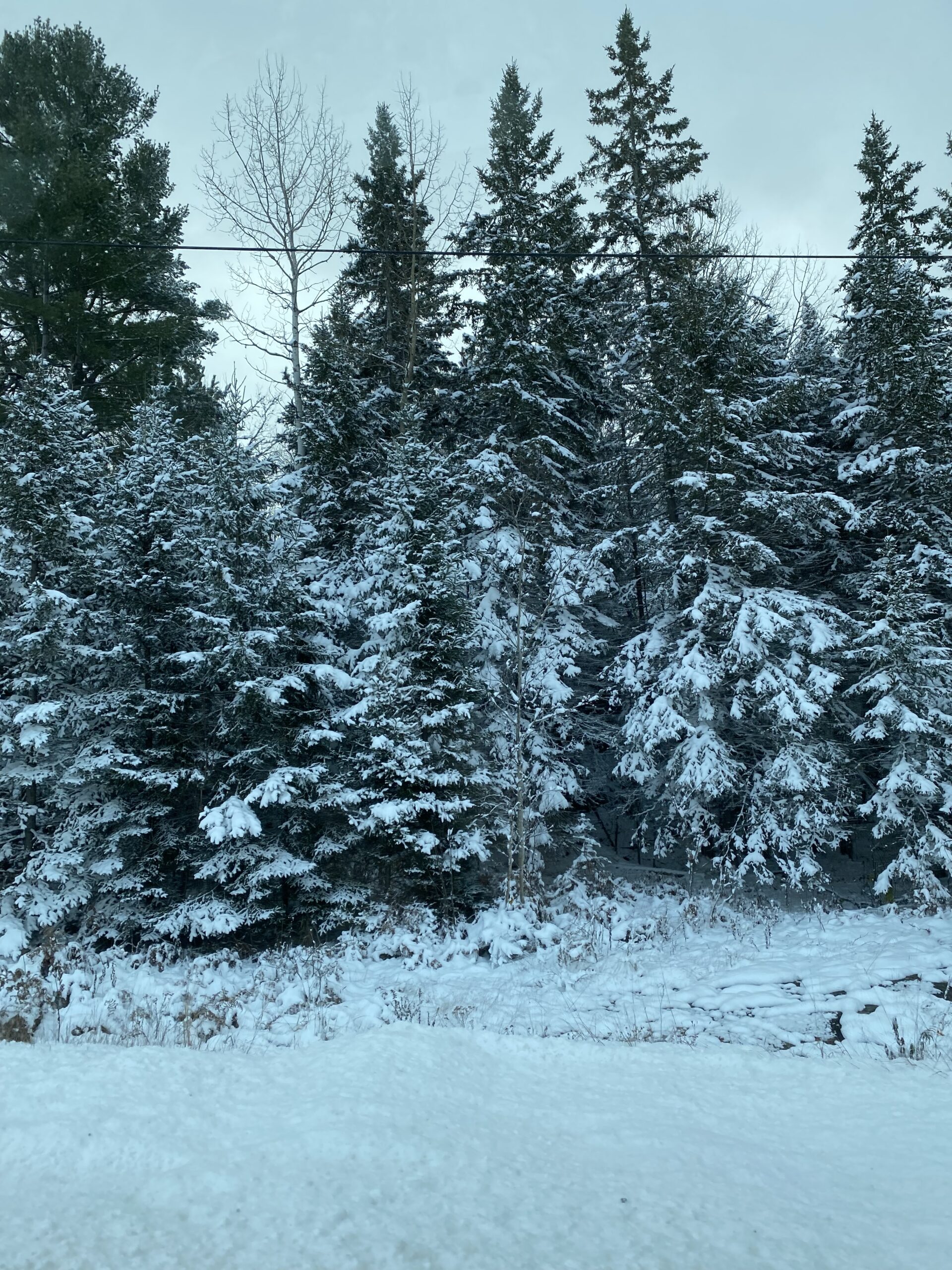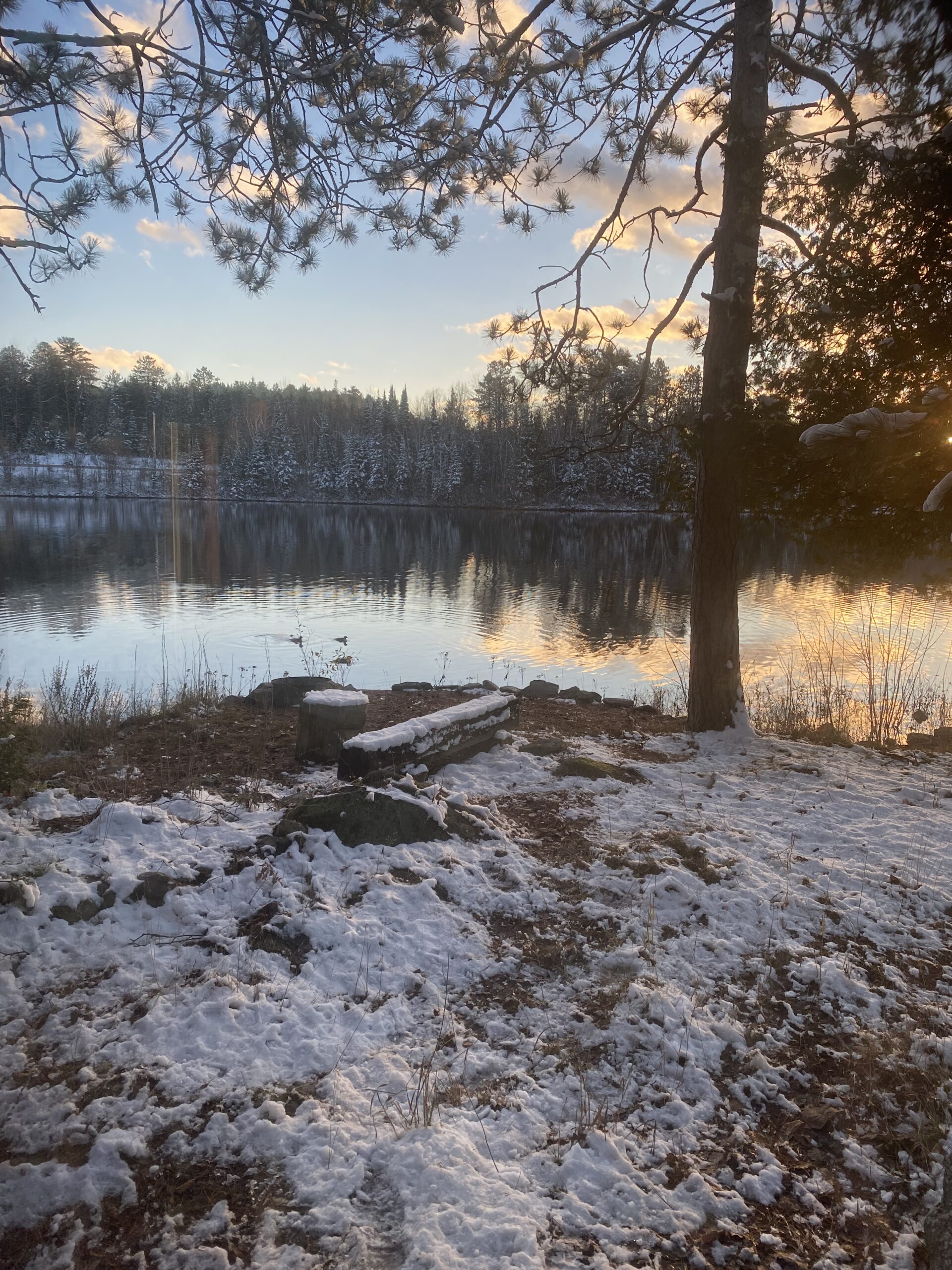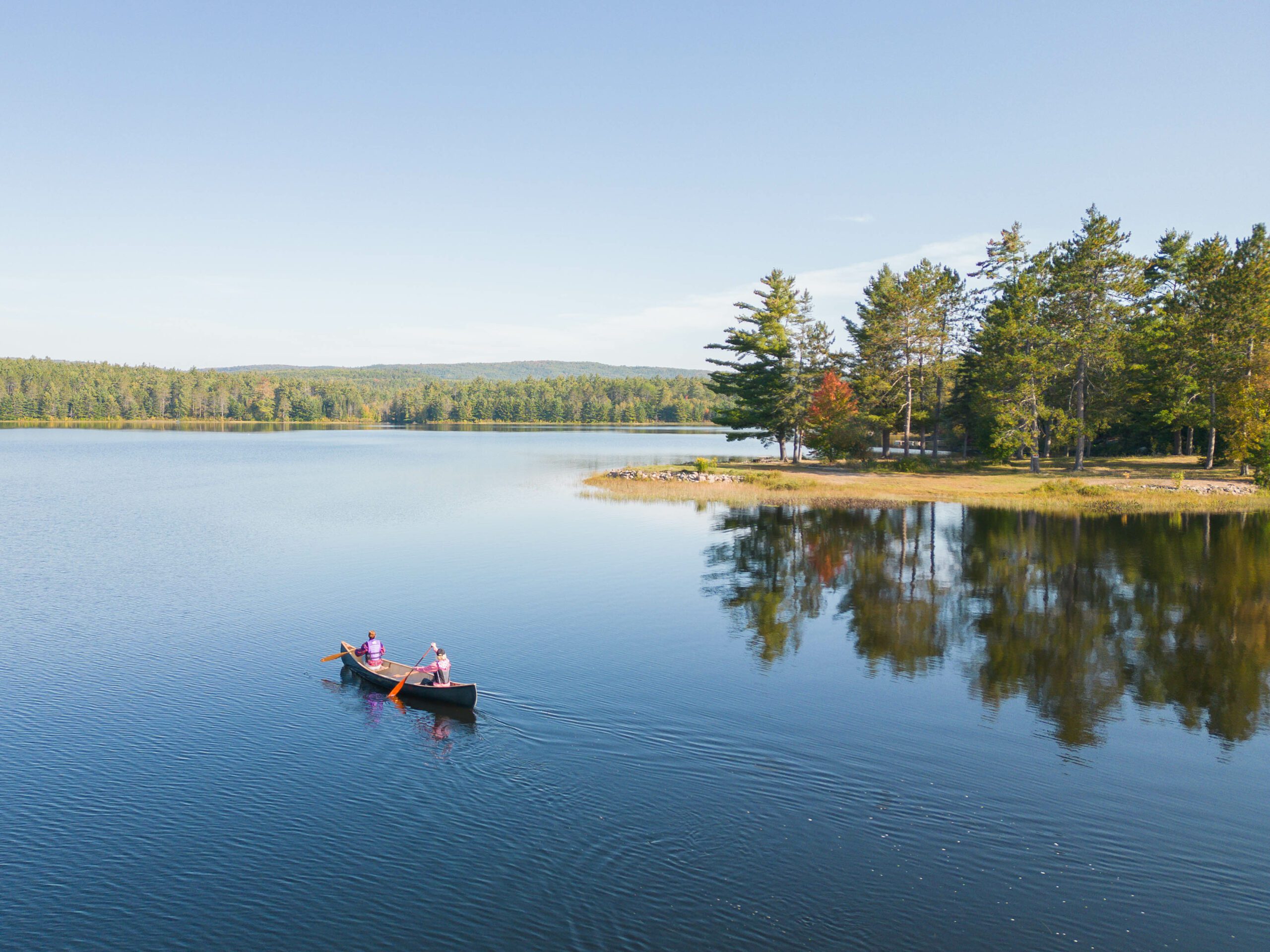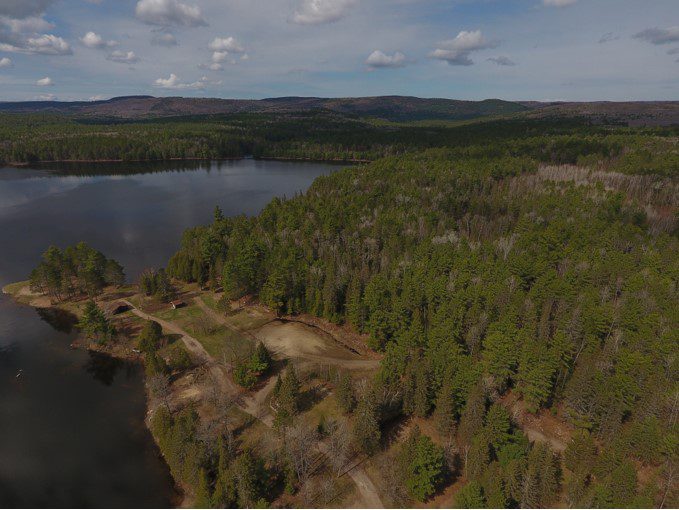This is a follow-up to “A Guide to Campground Safety- Part 1” but with fewer references to loons. If you have no idea what I am talking about, loons yodel. Did you know that? Ducks quack, geese honk, and loons yodel. Now you are up to speed, on to part two!

1. Before setting up camp, check your campsite for hazards like poisonous plants, steep drop-offs, or loose rocks.
Everyone says they know what poison ivy looks like, but the next thing you know, some innocent sumac is being accosted, and Tiny Tim needs medical attention from playing in the “safe” plants the group ignored while the sumac was wrongfully accused. My biggest recommendation is not to eat any plants you find in the wild. Mushrooms grow all over the North. Some are delicious, and some will kill you. The poisonous and the safe mushrooms look similar enough that they could be mistaken for each other in a police lineup. Unless you are the world’s leading botanist who likes to roll on the wild side, don’t touch or eat unfamiliar plants.
After you have conquered the “don’t touch the plants” segment of setting up your tent, you get to tackle the other immediate dangers that lurk in forests. People sometimes set their tents without realizing they are inches from a hill or a cliff. A big gust of wind comes, and suddenly, a lot of screaming and accusations fly as everyone scrambles to evacuate the tent. Camping on rocks can also lead to unstable ground your tent can slide on but, more importantly, is incredibly uncomfortable to lie on. Have you ever pitched a tent and somehow, right where you are sleeping, there is that one rock that is just stabby enough to poke you through your thermarest and sleeping bag and make you regret ever leaving home in the first place, forcing your tent-mates to move the tent at 1 am because a bear is less scary then you if you do not go to sleep immediately? Oh, me neither. But if either of us did experience this, trust me, it would suck. Look at the ground before you pitch your tent. Also, remember that pinecones may look pretty on a Christmas tree, but if you are forced to sleep on one, it may as well be a rock.
2. Ensure you have enough water for everyone in your group, and bring a water treatment method like a filter or purification tablets.
We hiked the Akshayuk Pass in Nunavut this past summer, 2023 (I will write a long blog post about this soon), and we were shocked to encounter a couple heading into the park without a reliable stove or water treatment plan. This was a two-week hike where you are alone in the middle of the Arctic and require a satellite phone and helicopter rescue if you run into trouble, which could take days to reach you. While Nunavut is an extreme example of being stranded on a camping trip, it is crucial to be prepared in case the trail you are on becomes inaccessible to rescue personnel. Assume that no water you encounter on a hiking or canoe trip is safe to drink unless purified. The two most reliable water treatment methods are Aquatabs and boiling the water on a stove. If you plan to bring a stove, you need white gas. If you must fly to your hiking or canoe trail, you must ensure you can buy white gas when you land.
Always test your stove to see how long a container of white gas will last so you can plan for your meals, drinks (like coffee and tea if you bring it) or water purification. Remember that white gas is heavy, so it is a delicate balance of minimizing weight while not running out. For Aquatabs, these are incredibly lightweight and usually come with several hundred in a pack. Again, test them out before your trip so you know how many tablets you need for the amount of water that fits in your water bottle. Always plan your route so you know how many and how frequent water sources are. There are some trails riddled with streams, but others have mainly stagnant sources of water which, unless they are large like a lake, are not safe to drink from (even if you purify the water, there are some bacteria that grow in stagnant water that you cannot always boil away, and there is so much detritus that it wouldn’t be a pleasant experience anyway). If you know there will be a three-day stretch where you won’t reliably be near a river, bring three days’ worth of water bottles. Always have at least two water bottles so you can drink water from one bottle while the other is purifying. You never know what you will encounter or how hot the weather can get. Plan to refill a water bottle as soon as you empty it as quickly as possible. That concludes my rant about water. Thank you for coming to my Ted Talk.
3. When building a fire, keep a fire ring or designated fire pit small. Never leave a fire unattended, and make sure it is fully extinguished before leaving.
In part one, I mentioned that fire can travel through root systems in plants and trees. This is why forest fires spring out of nowhere and cross streams and rivers. At Otter Pointe, we have designated fire pits lined with rock for guests to minimize the chances of the ground catching fire. Always double-check if a fire pit is safe before you use it. Only light a fire in a designated area and double-check it is fully extinguished before leaving it unattended. Never start a fire in a makeshift fire pit or without checking that it is safe to do so with your campground.
4. Know the signs of hypothermia, heat exhaustion, and dehydration, and take steps to prevent them from occurring.
In Canada, it is entirely possible to be in a situation where you can suffer both heat exhaustion and hypothermia on the same day (it’s called October). Take some time to ensure each group member knows the primary signs and symptoms to look out for and have a plan to deal with any problems that may arise. Think of it as your wilderness emergency fire escape plan- you never want to use it, but if you don’t have one and the emergency occurs, things can go wrong quickly.




5. Check for ticks regularly, especially in wooded or grassy areas, and remove them promptly.
A tick is a tiny raisin of doom that plagues innocent passersby with loss of blood and potentially life-long disease. They can leap great distances and need to be handled with care. Wear long socks or pants to ensure your exposed skin is not touching the grass. You can purchase tick repellants to minimize the likelihood of a tick bite. Even if you use these prevention techniques, it is always essential to check for ticks. You should reapply sunscreen every couple of hours when outside; use this as an opportunity to check for ticks.
If you must remove a tick, always use tweezers, grab it by the head, and pull it straight back. Never twist the tick. It is always a good idea to keep the tick in a sealed plastic bag or sealed container and book an appointment with your family doctor so they can identify if it is likely to carry lime disease. Treatments are available to mitigate or prevent lime disease if caught early enough, so always seek medical attention shortly after finding a tick on your person.
6. Keep a whistle or signalling device with you in case of emergencies.
Whether you could fall off a cliff, down a ravine, into a river or lake, or just down in the forest with an injury preventing you from walking out, you need some device to signal for help. A whistle is one of the most effective tools you can carry as they are lightweight and don’t require a lot of air to make a loud sound. Another option is a flare, but check the park’s rules and regulations beforehand to ensure they can be used in your area. Phones can break and run out of battery. While we always aim to prevent these situations, sometimes it may just be you and the hope that someone is passing nearby. Always bring a signalling device that can work without power, day or night, wet, and with minimal effort on your part.
7. Respect wildlife by observing safely and not feeding or approaching them.
Cats are cute; so are dogs. Bobcats and wolves look like cats and dogs, but they differ from our fuzzy friends at home. While your pet kitty may gnaw on your foot to the point where you think he might be trying to digest you, I promise you he is (most likely) just playing. A wild bobcat you haven’t spent years feeding and adoring will not be as restrained as your house kitty. Dogs are friendly and trainable, but wolves and foxes are wild creatures who do not know or trust you. You will not be able to establish a loving bond of trust with them in a forest during your five-minute interaction, so no matter how cute/friendly/close the wild animals you encounter may appear, do not touch or approach them. They can carry disease and fleas, and their teeth and claws are pretty powerful if you get close enough to experience them (which is not recommended).
8. Keep a phone or other communication device on hand in case of an emergency, and make sure it is fully charged and has service in the area.
I touched on this in the first post, but make sure you investigate the cell service situation. For example, we have excellent cell service at Otter Pointe, but if you plan to hike to canoe from our resort into Algonquin, you will quickly require a satellite phone. When using a satellite phone, always bring a spare battery and check to make sure you know how the phone works before you leave. Test the phone to see if it does what the instructions say it will do. Pro tip: Don’t call an emergency number like we may have done the first time we tested out our satellite phone years ago and then hung up quickly in a panic. The search team is still probably looking for us in the A&W parking lot. We (now) call the Iridium phone test number at 1-480-752-5105 to make sure the phone is working properly. Depending on what phone you use (if you buy or rent your satellite phone- more on this in a future blog post) you may need to pay to renew your subscription for each trip you take, forcing you to set it up as a new phone each time you travel.
For regular cell phone use, solar chargers have become very popular as they can hold one to two charges, don’t require electricity (which there is precious little of in the forest), are usually small and lightweight enough to carry and (unless it is pouring with rain for the entirety of your trip) are a reliable source of power. If you purchase one, I recommend testing it out a few times before your camping trip to ensure there aren’t any defects and you know how to use the equipment. It is all fun and games until you discover the high-tech Scandinavian charger has no apparent power button, and you don’t know what any of the settings mean, and you left the instruction manual at home, which your cat is probably eating as we speak. Typically, this realization strikes when you are stranded in your tent, you have approximately half a percent of battery left, and your friend accidentally nearly severed his arm off trying to be fancy with an axe. Don’t be that guy. The rangers may let the bears eat you to teach you a (short-lived) lesson.
Conclusion
Campground safety is paramount and considered easy, yet it is often overlooked (which causes problems). Take the time to plan before you camp. It is always better to have wasted an hour making sure you are ready for worst-case scenarios rather than having one and not being prepared to handle it. Wishing you safe travels!






